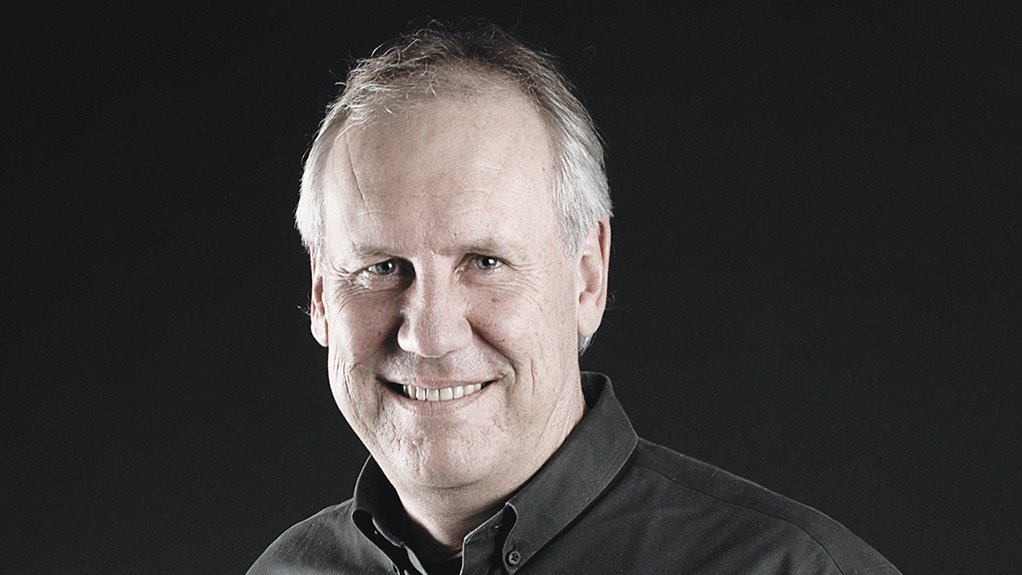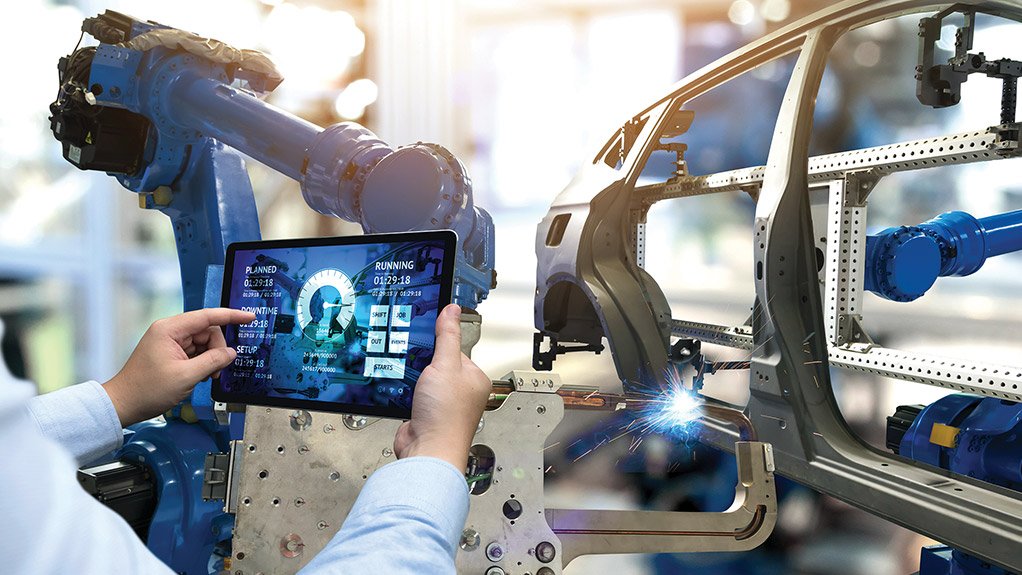The fourth industrial revolution, an African perspective
New and emerging technologies are fundamentally changing the world in ways that were previously unimaginable. Technology driven innovation has always caused business models to go extinct. Some companies could not evolve and went out of business while others adapted, seized opportunities and thrived by taking advantage of new environments, says CSIR Materials Science and Manufacturing Executive Director Martin Sanne.
The significant difference today, he notes, is that technology is advancing at a pace never experienced before in human history, and the pace will only increase. Disruptive change enabled by emerging technologies is happening in the global manufacturing sector as much as (if not more than) in any other sector. This fundamental discontinuity with the past presents a threat to manufacturing firms that do not adapt quickly to this wave of change.They will not survive.
On the other hand, Sanne says firms that prepare for and embrace the new opportunities can become global players and grow exponentially. Specific technologies that have potential to fundamentally change the nature of business, work and society include, inter alia, cloud technology, big data, predictive analytics, cognitive computing, artificial intelligence, mixed reality, agile robots, collaborative industrial robots, robotic exoskeletons, three-dimensional (3D) printing/additive manufacturing, autonomous vehicles, bio-based materials, nano coating, self-healing materials, biosensors, 5G, wearable electronics, LiFi (cellular wireless networking using lights) and the Internet of Things (IoT).
Of relevance to manufacturing, Europe for example has identified a number of key enabling technologies (KETS) for example photonics, industrial biotechnology, nanotechnology, advanced materials, nano/micro manufacturing and advanced manufacturing systems. These are knowledge and capital-intensive technologies that are associated with high research and development intensity, rapid & integrated innovation cycles, high capital expenditure and highly-skilled employment. KETs have two specific characteristics that distinguish them from other enabling technologies – they are embedded at the core of innovative products and they underpin value chains.
The rapid rise and convergence of emerging technologies is driving a fourth industrial revolution (FIR), referred to in Germany as Industrie 4.0, notes Sanne.
The term refers to collective technologies and concepts of value chain organisation, which draws together cyber physical systems, IoT and the Internet of Services (IoS). The FIR is further enabled by the convergence of other emerging technologies, including virtual reality, advanced communications, Big Data management, product life cycle management, artificial intelligence, machine learning as well as smaller more powerful sensors that have become ever cheaper and more pervasive.
Sanne points out that the CSIR is driving these topics for industry in a new Project called Synapse. Project Synapse is an organisation wide strategy aimed at developing large scale, open access, industry-facing translational programmes (and associated infrastructure) that bridge the gap between research, development and industrial applications. Project Synapse focusses on the quick improvement of Industry performance, in key economic sectors in a significant way. High on the agenda is the improvement of national competitiveness issues in key sectors whilst addressing national imperatives and bringing in technology in line with global technology trends.
Some of the initial manufac-turing and industrial development areas in Project Synapse include Engineered Assembled Products that will contribute to increased exports whilst capturing a larger share of global high value manufacturing via technological support that enable high value manufacturing sector supply chains. Project Synapse will also contribute to the development of Advanced materials to reinforce high-value manufacturing industries using concurrent engineering and Industry 4.0 approaches to materials development. New Agro-processing ideas through technological support to food, materials and especially agro waste processing is also key to this space.
Industry 4.0 and FIR is addressed in a coordinated approach aimed at capacitating the CSIR and its industry innovation partners to embed its technologies for a competitive South Africa. This will be realised by Industry 4.0 technology platforms at the CSIR’s Industry 4.0 PLM Centre of Technology for digital competitive manufacturing and support services using new technologies, applications and services. These platforms will support existing and new industries, and foster industry/R&D networks. Fostering environments for workforce transformation (skills, diversity), notably artisans with new engagement models for human capital development is of particular interest.
By enabling ‘smart factories’, the FIR creates a world in which virtual and physical systems of manufacturing globally cooperate with each other in a flexible way, explains Sanne . Over the IoT, cyber physical systems communicate and cooperate with each other and with humans in real time. Through the IoS, both internal and cross-organisational services are offered and used by participants of the value chain. In a future in which production gets more networked, the complexity of production and supplier networks will grow enormously. Networks have so far been limited to single factories, but in an FIR scenario, “these boundaries can be lifted to interconnect multiple factories across the globe”, emphasises Sanne .
He highlights that such disruptive technologies will change the nature of manufacturing at industry and firm level. Some of the expected changes include the widespread adoption of high-tech manufacturing processes, such as
- 3D printing
- Nano and microscale structuring of materials;
- adaptive and smart manufacturing equipment & systems;
- resource efficient factory design;
- mobile and networked enterprises and business models seamlessly linking supply chains to local production;
- And more customer-focused manufacturing linking products and processes to innovative services.
- Sanne notes new sources of value will also be unlocked by this manufacturing paradigm. This include
- Opportunities to extensively package services with products;
- Sources of information on how products are used and age,
- Drawing on embedded sensors and open data;
- Becoming a ‘factoryless’ goods producer capturing value by selling technological know-how and leaving physical production to others;
- Remanufacturing end-of-life products to original specifications or better;
- Creating value from new strategic alliances within and between sectors;
- and exploiting new technologies more rapidly.
Another specific element to be aware of and respond to, he says, is that of catalytic innovations, which are defined as innovations that have the potential to fundamentally change society. “Catalytic innovations from the past include photography, automobiles, electricity, airplanes and telephones. The list has grown 10x to include twenty four-hour cities, drones, gene editing, light-emitting diodes and electric everything. New products and new industries are being created, which will create new jobs requiring new skills that that currently don’t exist.”
Advanced Manufacturing as a Catalyst for Re-industrialisation
Within the broader manufacturing sector, advanced manufacturing has a particularly important role to play in re-industrialisation and the creation of decent, well-paying jobs. Competitive advantage is increasingly dependent on combining new knowledge and improved technologies rather than the traditional factors of production like labour, materials and energy.
While there is a perception that advanced manufacturing has a negative impact on jobs, Sanne notes that international experience suggests the opposite. A World Economic Forum newsletter states that, while technology is often blamed for unemployment, in practice jobs were not disappearing but evolving – job losses in one sector often mean gains in another. It is also well known that manufacturing activity is associated with good economic multipliers and an International Finance Corporation study has also shown that the job multiplier effect rises as the manufacturing becomes more sophisticated, from about two for traditional manufacturing to 15 for the most advanced forms of manufacturing. Advanced Manufacturing with the use of Advanced Materials and processing techniques can be a key to growing South Africa’s jobs and gross domestic product. This will help South African manufacturers aggressively pursue export opportunities using innovative materials, products and manufacturing processes fuelled by increased investments in research & development, tighter more collaborative networks and an embracing of the Fourth Industrial Revolutions, Sanne concludes.
Comments
Press Office
Announcements
What's On
Subscribe to improve your user experience...
Option 1 (equivalent of R125 a month):
Receive a weekly copy of Creamer Media's Engineering News & Mining Weekly magazine
(print copy for those in South Africa and e-magazine for those outside of South Africa)
Receive daily email newsletters
Access to full search results
Access archive of magazine back copies
Access to Projects in Progress
Access to ONE Research Report of your choice in PDF format
Option 2 (equivalent of R375 a month):
All benefits from Option 1
PLUS
Access to Creamer Media's Research Channel Africa for ALL Research Reports, in PDF format, on various industrial and mining sectors
including Electricity; Water; Energy Transition; Hydrogen; Roads, Rail and Ports; Coal; Gold; Platinum; Battery Metals; etc.
Already a subscriber?
Forgotten your password?
Receive weekly copy of Creamer Media's Engineering News & Mining Weekly magazine (print copy for those in South Africa and e-magazine for those outside of South Africa)
➕
Recieve daily email newsletters
➕
Access to full search results
➕
Access archive of magazine back copies
➕
Access to Projects in Progress
➕
Access to ONE Research Report of your choice in PDF format
RESEARCH CHANNEL AFRICA
R4500 (equivalent of R375 a month)
SUBSCRIBEAll benefits from Option 1
➕
Access to Creamer Media's Research Channel Africa for ALL Research Reports on various industrial and mining sectors, in PDF format, including on:
Electricity
➕
Water
➕
Energy Transition
➕
Hydrogen
➕
Roads, Rail and Ports
➕
Coal
➕
Gold
➕
Platinum
➕
Battery Metals
➕
etc.
Receive all benefits from Option 1 or Option 2 delivered to numerous people at your company
➕
Multiple User names and Passwords for simultaneous log-ins
➕
Intranet integration access to all in your organisation























